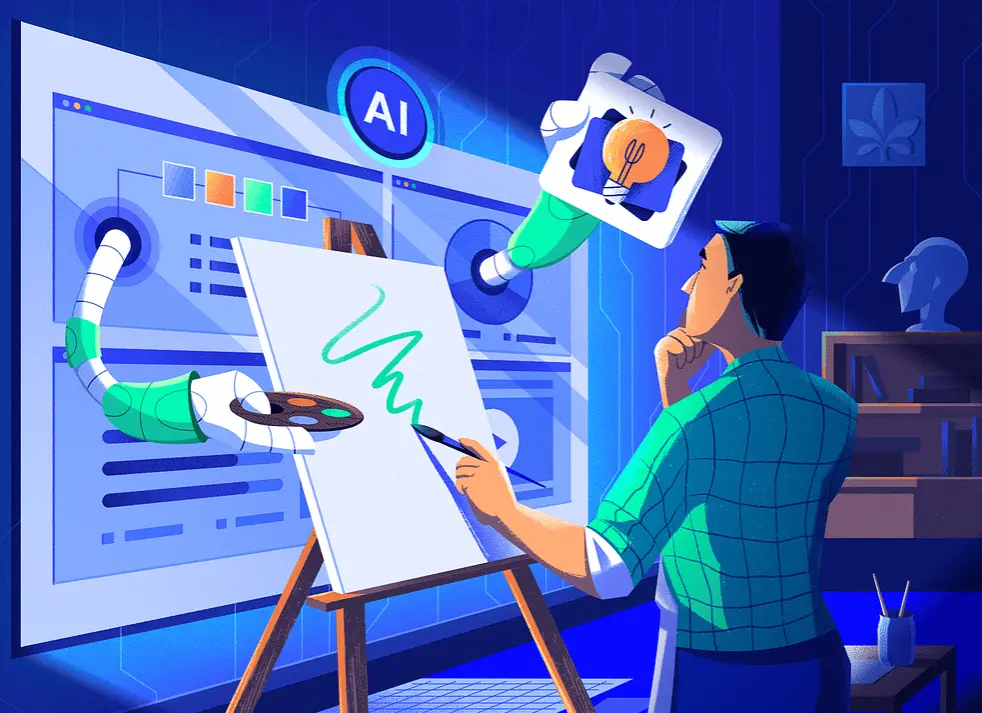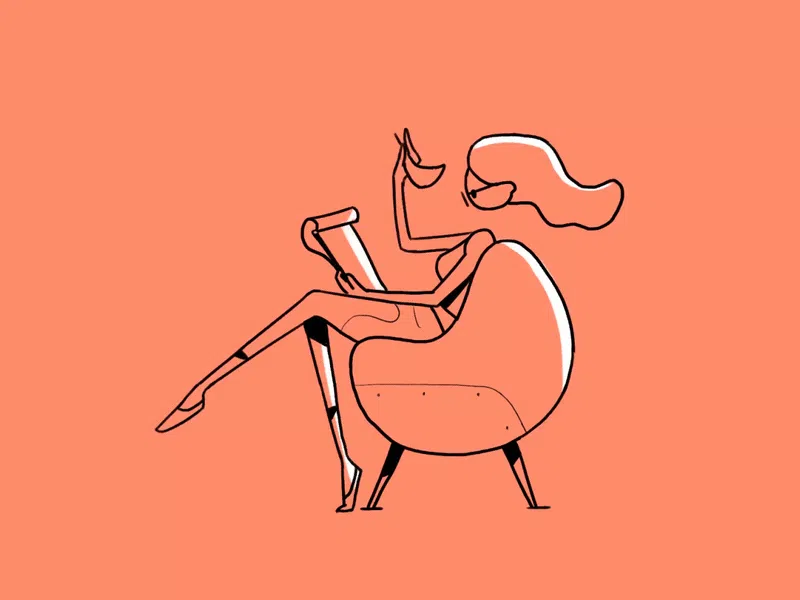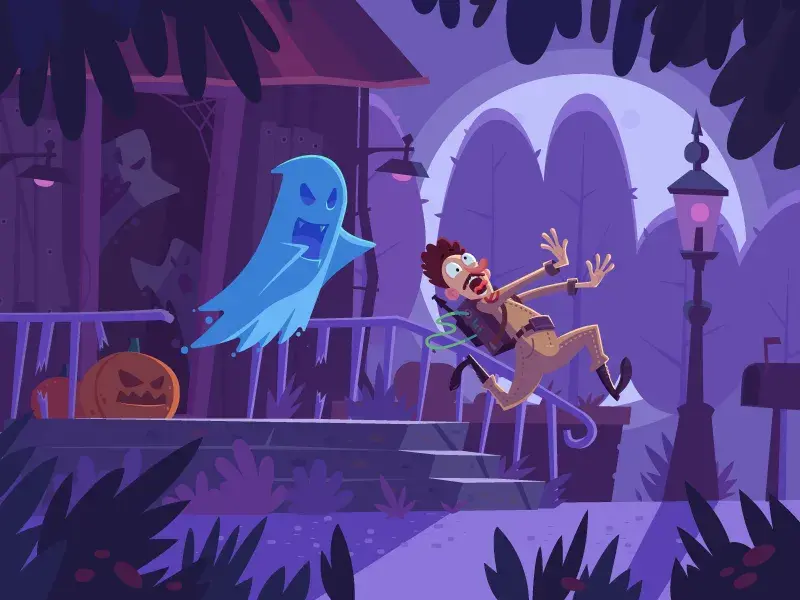Motion Graphics vs. Animation: What’s the Difference?
The difference between motion graphics vs animation does exist despite the fact that it is so blurry that can hardly be understood by an amateur viewer. It is not always possible to say exactly which market industry the video explainer belongs to. That’s why these words often seem synonymous. But don’t be fooled.
What are motion graphics?
Motion design & motion graphics studio produces animated graphics (including characters) to convey certain information to the audience. A video does not have to be necessarily entertaining, its main task is to provide information, sell a product, or explain an idea.
For example, motion design includes explainer videos, infographics, advertisements, movies with subtitles, etc.
So, what is the motion design difference? It usually formally differs from animation containing typography, abstract forms, etc. In fact, this formal distinction is more of a consequence than a real difference between animation and motion design.
Benefits of motion graphics
Motion graphics allows catering the information in motion in separate parts which may be used for multiple purposes. It is also cost and time-effective. As compared to other animations or explainer videos, motion graphics are cheaper to design and easy to create, use and share. You may also apply a variety of tools and techniques supported, pick a template, etc.
What is animation?
Animation produces animated graphics that may be self-contained and unrelated to other pieces of work. Often, the main purpose of the animation is to entertain, provoke a reaction, etc.
For example, these may be short and full-length animated films, music videos, TV shows, cartoons, or even claymation, etc.
These definitions explain the formal difference between what we will call motion graphics vs animation because animation may include the graphics as its integral part.
Benefits of animation
Animation is a real cost-saving communication strategy. It serves well to omit unnecessary words and visuals to allow you to cater to the messages quicker. It also much deepens the whole message visual understanding more than traditional visuals like diagrams, etc.
It is 30-40 years older than movies. When a Belgian mathematician Joseph Plato invented a disk with moving objects, it was considered to be the day when the first animation was actually introduced to the world. Due to the rapid rotation of the disk, the illusion that the frames placed on it were animated appeared.
Nowadays, there are so many animation variations used: frame-by-frame animation, whiteboard animation, computer animation, where Adobe After Effects is most often used, and other incredible styles. There are also transitions applied, animation keys – layers of movement of each part of the body, and other effects!
Difference between motion graphics and animation
What is the difference between animation and motion graphics? Below you will find the key differences that may be quite critical when choosing motion graphic vs animation trends for a production of a particular project.
Make sure to scale while approaching your next video production. Let’s take a look at how it differs from the inside, and at the peculiarities of the production.
Teams
The animation and motion design industries are very different in terms of typical team size.
In motion design over 70% of motion, designers work in teams of less than 3 people. While in animation about 75% work in teams of more than 4 people, including 30% work in teams of more than 11 people.
This difference is certainly a direct consequence of the difference in budgets and the amount of production time per video. Since video production is usually faster in the motion design industry, there is no time to build and train large teams for specific projects. This may explain further why the animation techniques and software used in the motion industry differ less than in animation.
Animators must know the basics of directing and editing and be able to draw from scratch. A motion designer doesn’t have to draw, but they need to have skills in dimensional projection, so knowing the physics of motion is even more important. If back in the days, a large team of people used to work on animation, now it can be easily replaced by one generalist.
Specialization
Since the size of teams and the organization of production are very different in animation and motion design, you may expect that the level of specialization will also be different.
If we compare the tasks performed in both cases, it is no surprise that motion design involves proportionately more clean motion design work (12% versus 2%). And in the animation industry, there is more work on general animation and character animation (15% for animation, 11% for motion design). But there are also minor differences to pay attention to:
- 1.16% of work in animation is in software development (versus 0.36% in motion design).
- layout stage is also very minor in motion design (3%), while in animation it is more important (7%).
Pre-production is an important step in working with animation, when the main idea is agreed upon, the characters are drawn, the storyboards are made and the most edits appear.
To sum up, in motion design about 84% of specialists have more than 4 different tasks to do within their roles (on average, 7 tasks).
While in animation 78% of the specialists have less than 4 different tasks in their work (on average, 3 tasks), even if there’s a voiceover.
Characters
One of the most notable differences between animation and motion design is the number of projects that include character animation.
In the motion design industry, the proportion of projects that include animated characters may vary greatly from studio to studio (from no characters overall to over 90%). On average, studios may include animated characters in 30% of their projects. While in the animation industry more than 90% of videos are made with characters. Animation is mostly all about character designing and putting them into the environments, where they may interact with the users, etc.
Tools
Since the animation design process is set differently from motion design, you may expect the tools to be completely different. In motion design folks may use After Effects in 100% of cases, in 54% of cases – Cinema 4D may be used.
In animation, you may apply After Effects 78% of the time, Flash / animate – in 57%. Another 4 programs like TVPaint, Harmony, Maya, 3DS Max are used by more than 30% of studios, and Blender – 17%. In motion design, more than 90% of the characters are created in After Effects, as well, depending on its specifics.
In animation a greater range of different programs also may be used, such as After Effects, Animate, Harmony, Maya, and 3DS Max.
Since there are more teams in game production, and, accordingly, it takes more time to create videos, there are probably more different chains of using several programs from here and there, while in the motion design industry, as a rule, only After Effects and Cinema 4D are the favorites to be used.
Budget
Since videos in motion design may be created to convey a specific message or sale, they are mostly paid up by the owners of the product and executed upon their requests. Therefore, as a rule, the budget of such videos is lower than in animation, the production time is much shorter, and the production is controlled and evaluated by the client.
In contrast, animation has a longer lead time and a larger budget, and can sometimes be funded even by non-commercial or governmental organizations. The director and producer may control the production process. There are various cases of production, and they are not limited to the above-mentioned variants. They also often explain why animation can be so visually different from motion design.
All incredible statistics found at Defining Animation & Motion Design
Also, check out more facts about the difference between animation and motion graphics & their application.
When to use motion graphics?
In a nutshell, motion graphics will be a better choice for outlining or emphasizing some brand facts and illustrating some points you’re trying to make. Motion graphics are often used when there’s no need to go into details or go deep with the narrative or storytelling. Motion graphic videos may break down even the most extremely complex products or services and represent them most memorably.
When to use animation?
As far as the animations are concerned, they may be applied to better guide users around the websites, products, or projects and even make them buy. It allows adding varieties of interactive elements and draws the users’ attention there through animated effects which help business websites improve ROI and raise conversions. The storytelling-based website may especially benefit from the inclusion of animations design.
Do you want to create your own video? – Feel free to contact us!
While looking for the right solution for your business to create incredible animated video explainers, Explain Ninja team will be the best in the town. Contact us and find out why easily.
Conclusion
Of course, the approach may differ from studio to studio, that’s first. Second, the key difference between animation and motion graphics as the two designing processes is that motion graphics may be referred to as a type of animation. Animation movies may often include graphics for good.
And third, while motion graphics mostly refers to some moving or animated graphic design, animation acts more like an umbrella term that embraces the whole moving imagery realm, including everything from cartoons to claymation and so on.
And finally, animation attracts so much attention in contrast to a static image because it is alive and can move. It entertains as well as encourages research. Stylization leaves more space for imagination, etc., though motion graphics may be applied with the same goals in quite different cases.
For a more detailed explanation and help choosing motion graphics vs animation for the project, always feel free to contact a motion graphics studio of motion design experts.


